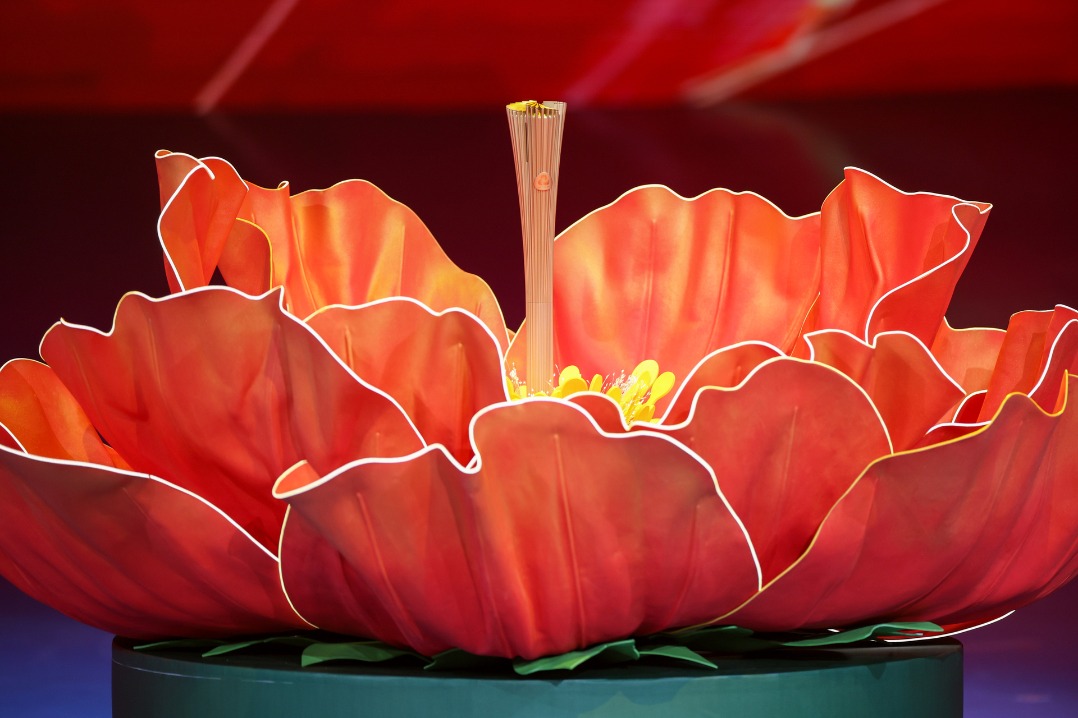Tales of triumph in quests to find rare flora

Since 2012, Zhou Xinxin has photographed over 16,000 plant species, more than anyone in China. Since last year, he has been expanding his botanical explorations beyond the country in an attempt to photograph more plant species than anyone in the world.
Zhou said he has had some interesting experiences during his quests to find plant species.
"I have too many stories with various plants," he said.
The following are stories he has shared involving three rare plants:
1. Cynomorium songaricum, found in the Inner Mongolia autonomous region
In June 2017, Zhou drove to the Alshaa region for one of his botanical excursions. On the last day of his trip, he decided to search for the Cynomorium songaricum, a parasitic plant that thrives at the roots of the Nitraria sibirica thorn. Despite hours of searching in its potential habitat, Zhou was unable to locate the plant, which is used as an aphrodisiac in traditional Chinese medicine.
Determined not to give up, he resorted to alternative methods. Knocking on the door of a nearby Mongolian yurt, he explained his quest to a middle-aged man inside. To his surprise, the man shared Zhou's passion for photography and offered to assist him in finding the plant. The man explained that most of the plants growing outside of the reserve had already been harvested by local herdsmen.
Together, they navigated the desert in the man's off-road vehicle until they reached a fenced-off area that, according to the man, was part of a local nature reserve. The man called his friend to find a hidden key they could use to unlock the fence and enter the area.
In the protected area, Zhou finally spotted one of the elusive plants and took photos of it.
2. Frankenia tuvinica, found in the Xinjiang Uygur autonomous region
In June 2018, Zhou and several friends took photos of a species of Frankenia on the shore of Lake Sayram in Xinjiang. According to the book Flora of China, there is only one species of Frankenia, Frankenia pulverulenta, distributed in the country. So Zhou considered the plant they saw to be of that species.
In July 2020, he discovered the plant again at Lake Sayram and posted photos he took of it on his WeChat Moments. A researcher from Inner Mongolia saw the photos and told Zhou that the flower he saw was probably not Frankenia pulverulenta, but Frankenia tuvinica, a new plant species in China.
In September last year, Zhou traveled to Ejine Banner in Inner Mongolia and saw a real Frankenia pulverulenta. By comparing photos, he was able to determine that the plant he saw in Xinjiang was indeed Frankenia tuvinica.
3. Centrolepis banksii, found in Hainan province
On Christmas Eve in 2020, Zhou offered a reward of 5,000 yuan ($688) on Chinese social media platform Sina Weibo to anyone who could find a plant called Centrolepis banksii.
A species of plant in the Restionaceae family, it is a grass found mainly in northern Australia. According to specimen data, this species is also found in Vietnam and Hainan province in China.
However, the last time a Chinese researcher had been able to locate a specimen in Hainan was in 1956.
Zhou always believed that a small plant like Centrolepis banksii wouldn't just disappear. Therefore, from 2018, he started traveling to Hainan every year before the flowering and fruiting period of the plant to search for it. Whenever he traveled to Hainan for work, finding the plant became a priority for him.
In 2020, he and a Hainan botanist searched for the plant in Qicha town for two days but were unable to find it.
So Zhou decided to post the 5,000 yuan reward, hoping to enlist the aid of others to find the tiny plant.
One day last year, a friend informed him that someone had found the plant in Hainan. After inquiring extensively, he learned that a survey team from the Kunming Institute of Botany had unintentionally discovered it during a field investigation in Hainan in early April. They saw some of the plants on the brink of wilting.
Zhou estimated that it should sprout and flower around November to December.
In late October last year, he eagerly joined the KIB team on a trip to the collection site to search for seedlings of the plant. However, perhaps because they had arrived early, they were unable to find what they were looking for.
On Jan 1 this year, while dining with Professor Zhang Kai from Hainan University in Guangzhou, Guangdong province, Zhou mentioned the plant. Zhang offered to check its growth status in Hainan and immediately inform Zhou if he found anything.
On Jan 11, Zhang, accompanied by three students, conducted a plant survey in Wenchang. After spending an afternoon searching for the plant, as darkness approached, Zhang called Zhou to report that they had been searching for a long time without success and were considering giving up.
However, shortly after, Zhang made a video call to Zhou. They had found it!
Zhang explained that while intending to show a student a tiny flower on the grassland, they unexpectedly stumbled upon Centrolepis banksii, which was incredibly small.
Zhou spent the night sleepless with excitement. After work on Jan 12, which happened to be a Friday, he and two of his friends drove through the night to Haikou and finally found the blooming plant.

Today's Top News
- Unified national market a new growth launchpad
- US deal a structural challenge for Japan
- Industrial prowess of China a subject of serious study
- US new tariffs 'unfair': Experts
- NDRC recalibrating steps to drive growth, boost demand
- Wartime hero's legacy fortifies Sino-UK bond






























